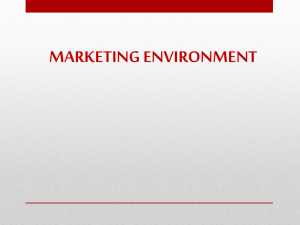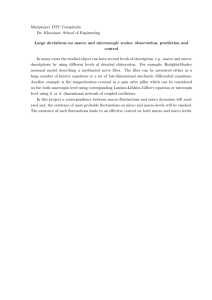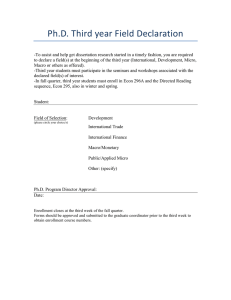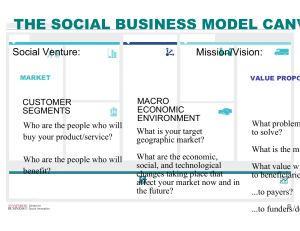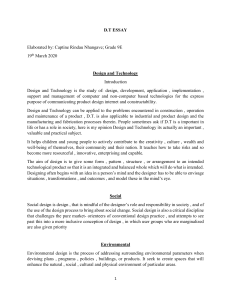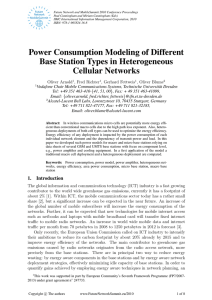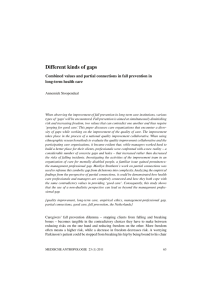201 عمل chapter2
advertisement
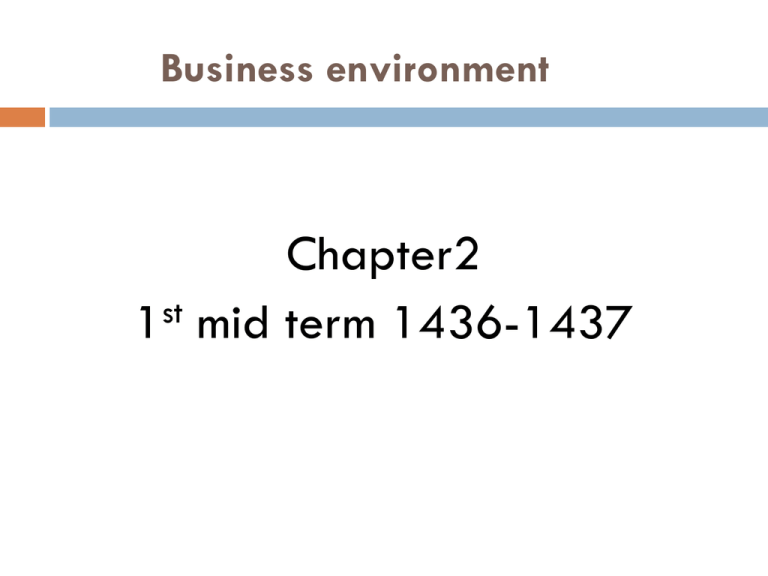
Business environment Chapter2 st 1 mid term 1436-1437 What do you mean by Business Environment??? The environment of any organization is “ the aggregate of all conditions, events and influences that surround and affect it.” Characteristics of Business Environment: Complex Dynamic Multi-faceted Far- reaching impact Why Study Business Environment Development of broad strategies to ensure sustainability To foresee the impact of socio-economic changes at the national and international levels on firm’s ability Analysis of competitor’s strategies and formulation of effective counter measures To keep oneself dynamic Types of Environment Internal Environment External Environment Micro environment Macro environment Economic Non Economic Internal Environment Refers to all the factors that are within an organization which impart strengths or cause weaknesses of strategic nature. Controllable factors. These include: Value system Mission and Objectives Management Structure and Nature Components of Internal Environment Human Resources Company Image and Brand Equity Other Factors Physical Assets and Facilities R & D and Technological Capabilities Marketing Resources Financial Resources External Environment Includes all factors outside the organization which provide opportunities or pose threats to the organization Uncontrollable factors Consists of Micro and Macro environment Micro Environment “It consists of the factors in the company’s immediate environment that performance of the company”. affect the Micro Environment Factors Suppliers Customers Marketing Intermediaries Competitors Publics Financial Community Macro Environment It comprises general trends and forces that may not immediately affect the organization but sooner or later will alter the way organization operates. Macro Environment : Economic Non Economic Economic Environment Economic stages that exists at a given time in a country Economic system that is adopted by a country for example. Capitalistic, Socialistic or Mixed Economy Economic planning, such as five year plans, budgets, etc. Economic policies for example, monetary, industrial and fiscal policies Economic Indices such as National Income, Per Capital Income, Disposable Income, Rate of growth of GNP, Distribution of Income, Rate of savings, Balance of Payments etc. Economic Problems Functioning of economy Non Economic Environment Regulatory Environment Socio- Cultural Environment Demographic Environment Technological Environment Political Environment Non- Economic Environment Cultural Environment Social Customs & Rituals and practices Lifestyle patterns Family structure Role & position of men, women, children and aged in family & society Non- Economic Environment Demographic Environment Growth of population Age Composition Life Expectancy Sex Ratio Fertility and Mortality rates Inter-state migration Macro Environment Technological Environment Sources of technology Technological development Impact of technology Political Environment Political parties in power Political Philosophy Macro Environment Regulatory Environment Constitutional framework Policies relating to pricing and foreign investment Policies related to the public sector, SSIs, development of backward areas and control of environmental pollution International Environment Important factors that operate at global level which have an impact on organization are: Growth of world economy Distribution of world GDP International institutions IMF,WTO ILO Economic relations between nations Global human resource-nature and quality of skills, mobility of labor Global technology and quality standards Global demographic patterns Thank You

